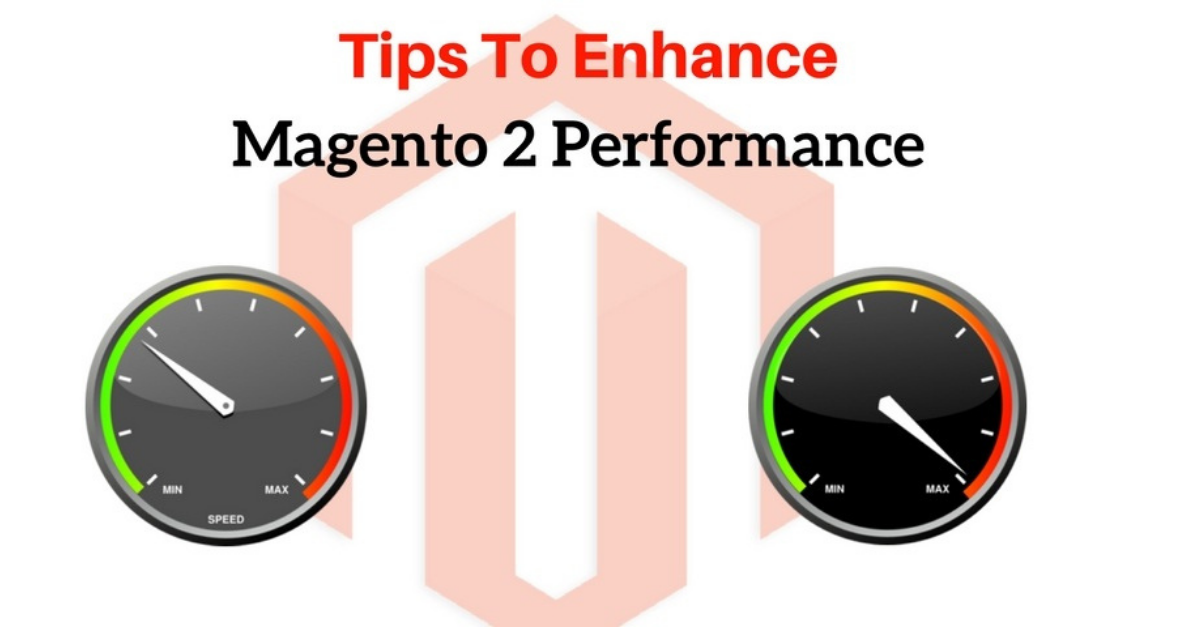Tips To Enhance Magento 2 Performance
-
 Nidhi Arora
Nidhi Arora
- 8 years

Come on! Stop complaining about the speed of Magento on the web. You are living in the era of techie world. You need to fix it by yourself or find some informative website talking about the Magento performance.
You might be afraid of losing sales due to the high abandonment rate or something like bad user experience. But you should not forget that you have chosen this platform instead of WooCommerce which is an extension of WordPress. One of the main reason that many business people choose this platform is its robustness along with the high level of functionality, scalability as well as customizability.
If you are here for the relevant information then you are at the right place to invest your time in finding the well-proven ways to speed up the performance of Magento.
Let’s have a look at the following points:
1. Update to the Latest Magento Version
Make sure your Magento store is running at the latest updated version of Magento. Basically, a newly updated Magento version comes with lots of bug fixes and performance enhancements. Here are three main steps to upgrade a Magento installation:
#1 Step:
First off, install a very latest version of Magento file tree in Magento shop.
#2 Step:
It’s time to run the installer which is accessible through the file tree available on the top of your outdated database.
#3 Step:
Now move over custom Magento extensions and themes from the old Magento version to the latest version.
Upgrading Magento version requires little more efforts compared to other eCommerce platforms. Here you can follow another in-depth tutorial to learn how to fully upgrade Magento.
2. Implement a Perfect Content Delivery Network (CDN)
Implementing a perfect Content Delivery Network (CDN) is another easiest way of Magento speed optimization. It works by reducing your Magento store load times and helps you to serve your assets (like javascript, CSS and product images) from many different locations across the globe so that they can reach quickly to your shoppers.
3. Image optimization:
Let me give you a clear idea that on average 56 percent part of a website is consumed by images. If you optimize your product images, the speed of your pages will increase in a dramatical way. You can optimize it by compressing them with the help of a tool called Photoshop as well as you can also make use of the extensions to auto-optimize them.
As we are here talking about the Magento 2, the following extensions are available for it:
TinyPNG Extension
Compressor Extension
Magento Extension like Gtspeed can be obtained with the help of GTMetrix. It provides optimized image along with the other benefits such as CSS/JS concatenation and minification.
You can have a look on how it shows before optimization and after optimization.
4. Concatenate CSS and JavaScript Files:
Magento 2 comprises of a built-in feature to concatenate your CSS and Javascript files into a single file. It will reduce a total number of HTTP requests which further helps in the loading of your pages fast.
Firstly, you need to navigate to the “System”, then “Advanced”, and then, “Developer”. Now, you need to change the drop down to “Yes” under both JavaScript as well as CSS settings and then click on the “save config”.
5. Enable Magento Compilation:
Magento has a special compilation feature which gives 50% performance boost. What actually happens all the application files of Magento are searched in an order whenever the page loads resulting in the file system reads. Only the Magento compiler reduces these reads just by copying all of the files in a single directory and caches those which are used more frequently
You just need to keep in mind one thing that when upgrading Magento, disable this feature.
6. Flat Catalog
It is the default functionality of Magento that it uses an EAV model to save and retrieve customer details and product data. Undoubtedly, this default model is responsible to make the Magento system more flexible, however, it badly impacts its performance because of longer database queries. This is where “Enabling Flat Catalog” option shines. By enabling this option, it will merge all product data and category attributes into a single table. Hence, it will quickly respond to MySQL queries and enhance your Magento performance. If your Magento based eCommerce store contains 1000+ products, this method can be very beneficial for you.
#1 Step:
Open your Magento admin panel and navigate to “Stores” -> “Configuration” -> “Catalog.”
#2 Step:
Choose “Yes” from the drop-downs of “Use Flat Catalog Category” and “Use Flat Catalog Product” under “Storefront.”
#3 Step:
Now tap the “Save Config” option.
#4 Step:
The last step is to clear the cache. The most recommended method to do so is to clear everything under /var/cache directory. Moreover, you can also do the same by first navigating to “System” -> then “Cache Management” and selecting the “Flush Cache Storage” option which is very similar to clearing all the cache.
7. Choose the fast web hosting:
Last but not least, make a choice for the reliable and fast web host. This is one of the most important decisions when we are trying to improve the Magento performance. Never get with the cheap shared hosting as they overcrowd their servers by making you fool. We suggest you go with the VPS such as Digital Ocean and Linode. So, you will get complete control of your resources. Moreover, ServerPilot is a great control panel which works with Magento and the VPS providers.
You can take Magneto Experts’ help in this regard. We at Envision Ecommerce have a team of very skilled Magento Certified Developers. To avail our Magento Speed Optimization services from our certified Magento experts, you can contact us at sales@envisionecommerce.com or visit: https://www.envisionecommerce.com.
Download Blog












